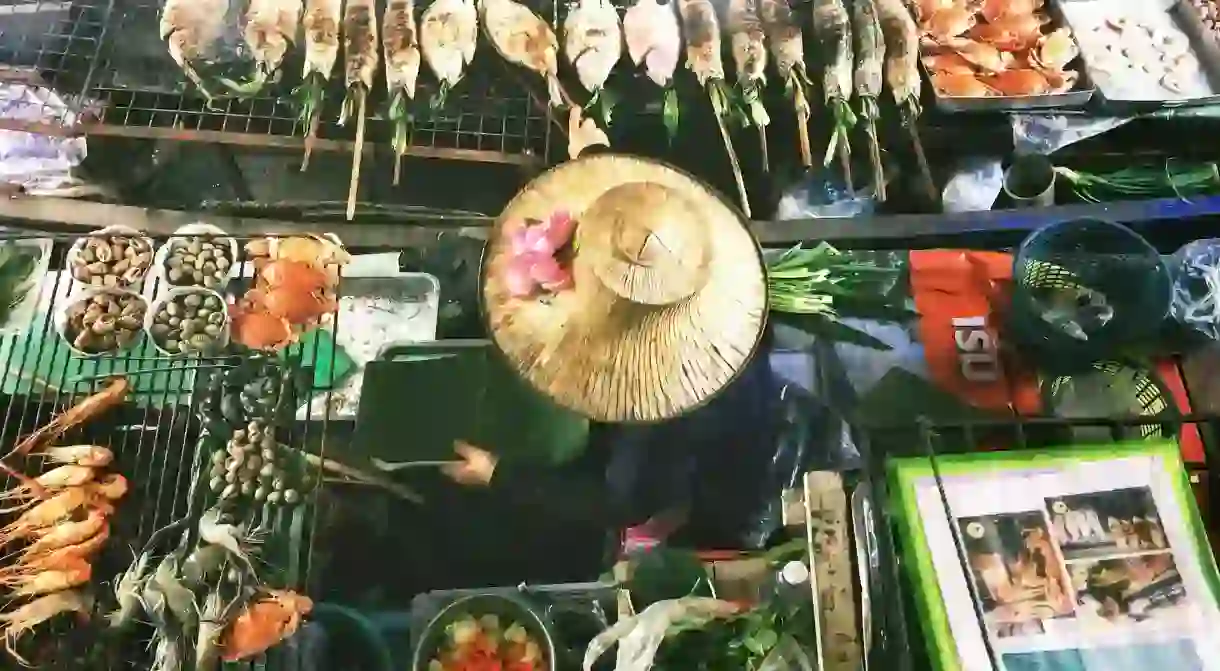The Best Things to Do on Khao San Road, Bangkok

Khao San Road is a bustling, effervescent and kaleidoscopic street in Bangkok, brimming with Chang beer T-shirts, tasty pad thai and enthusiastic travellers from all over the globe. A short walk through the heart of the city exposes visitors to all the street has to offer, and guides them through an area where the beer is flowing, the lights are bright and the energy is infectious; here’s our guide to the best things to do and see on Khao San Road, Bangkok.
Experience local life
This is the place to see a diverse mix of people from all walks of life ambling past each other on the same street, where excited British students mingle with Thai locals, where small children laugh and play with toys, while famous Bangkok ladyboys strut their stuff, and regal Buddhist monks browse the stalls of enthusiastic vendors. Take time to sit back and people-watch when you arrive onto Khao San Road, and soak up the diversity of Thailand’s most lively walkway.

Shop at Thanon Khao San market
Market

Visit the Ghost Tower
Architectural Landmark

Tour Bangkok’s National Gallery
Art Gallery
Thailand is not known for its museums, but the National Gallery just beside Khao San Road is a beacon of art and culture in Bangkok. This old colonial building once served as a royal household during the reign of King Rama V, and is now the setting for a rotation of temporary exhibits that illustrate the hardships and beauty of Thai life. Watch out for old black and white photographs of Bangkok, as well as some stunning and intricately woven ancient tapestries.
Look around Wat Chana Songkhram
Buddhist Temple

Wat Chana Songkhram is an 18th-century Buddhist temple with a name translating to Temple of Victory in War. Although it is not an especially famous example, it nevertheless has appeal, with its grand, golden interior and long history. Here visitors will find shiny, gilded designs and well as ornate colourings, and remarkably, the place manages to maintain a serene atmosphere despite being across the road from notoriously noisy Khao San Road. A place of tranquillity and prayer for locals, a visit to Wat Chana Songkhram provides a perfect slice of peace and quiet away from the surrounding busy streets.
Walk to Wat Bowonniwet
Buddhist Temple
Bangkok has more beautiful Buddhist temples than you will ever see in your lifetime, but make sure you visit one or two. Wat Bowonniwet is the residence of the Mahamakut Buddhist University, a royal-affiliated monastery and the national centre for the Thammayut sect of Buddhism. Still active and of national importance, the temple also provided the setting for the ordination of the present king. Wat Bowonniwet exudes a casual, laid-back atmosphere, and the pretty murals here artistically illustrate the influences westerners have on Thai life.
Arrive by boat
Any visit to Bangkok will require use of local transportation at some point, and if you don’t want to put your life on the line in a crazy tuk-tuk, a popular way to get to Khao San Road is by boat – on the Bao Phraya Express or a Klong river vessel. These provide slow, relaxing rides and are a great opportunity to experience the Chao Phraya river, the lifeline running through the heart of the city. More than 15 boat lines operate here, and water taxis can also be hailed for ridiculously cheap prices.

Discover the October 14 Memorial
Memorial
Just around the corner from Khao San Road is a majestic memorial dedicated to those who died under the military dictatorship on 14 October 1973, while demonstrating peacefully against the government. The event remains controversial, and the photographs on display illustrate the deaths of more than 70 activists. There’s a tranquil amphitheatre here where civilians still gather for non-violent protests, and for travellers seeking a true taste of Thai culture and politics, this is a gloomy yet thought-provoking must-see.
Try Thailand's famous street food
Shop














